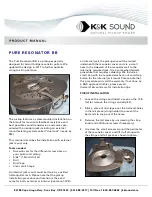
Figure 9. Current Verification Connection Diagram
NI-DCPower Device
Sense LO
Sense HI
HI
LO
+
–
Precision
Shunt
DMM
Voltage
Mode
2.
Set the
niDCPower Output Function
property or
NIDCPOWER_OUTPUT_FUNCTION
attribute to DC Current for the PXIe-4137.
3.
Set the first specified level range, limit range, and limit on the PXIe-4137.
4.
Measure the internal device temperature and perform self-calibration if necessary.
a)
If the internal device temperature exceeds T
cal
±1 °C, wait up to five minutes for the
temperature to stabilize to within T
cal
±1 °C.
b)
If after five minutes the stable temperature still exceeds T
cal
±1 °C, call the self-
calibration VI or function.
5.
Set the level on the PXIe-4137 to the first specified test point.
6.
Calculate the current through the shunt by completing the following steps.
a)
Take a voltage measurement across the shunt using the DMM.
b)
Divide the voltage measurement by the calibrated value of the shunt.
c)
Record the calculated value as
DMM Measured Current
.
7.
Calculate the lower and upper current measurement test limits using the following
formula:
Current Measurement Test Limits
=
Test Point
± (|
Test Point
| *
% of Current
+
Offset
)
8.
Verify that the calculated
DMM Measured Current
value falls within the test limits.
9.
If more than one test point per level range is specified, repeat the previous steps for each
test point, from setting the level to the test point on the PXIe-4137 up to this step.
10. If more than one level range is specified, repeat the previous steps using the values
specified in each level range.
Adjustment
This section describes the steps needed to adjust the PXIe-4137 to meet published
specifications.
18
|
ni.com
|
NI PXIe-4137 Calibration Procedure









































